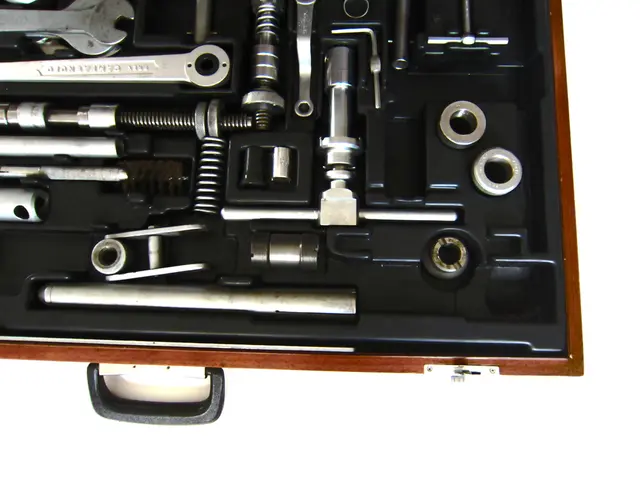Robotic Hands Equal in Skill to Human Counterparts Revealed!
In a groundbreaking development, the latest humanoid robot, Phoenix, has demonstrated unprecedented precision and dexterity in object manipulation, thanks to its advanced hydraulic systems. With 21 degrees of freedom in its hand movements, Phoenix is setting new standards in the field of robotics.
The integrated force feedback system in Phoenix calculates fluid pressure differences, enabling it to mimic human-like movements with remarkable smoothness and adaptability. This high level of dexterity is crucial for the potential market size of humanoid robots, particularly in applications like healthcare assistance and manufacturing precision parts.
Sanctuary AI, the company behind Phoenix, has rigorously tested its hydraulic systems for over two billion cycles, ensuring no wear or leakage. The durability of Phoenix's hydraulic systems is a testament to their reliability and robustness in real-world applications.
The advantages of hydraulic actuators in humanoid robots primarily stem from their high force output, ability to mimic human-like movements, and robust performance in complex tasks. Hydraulic actuators can generate substantial force, making them suitable for tasks requiring significant strength. Their fluid-based operation provides smooth, continuous motion that closely resembles the nuanced flexibility of human muscles, improving manipulation precision and adaptability.
Moreover, hydraulic systems can be more resistant to harsh environments and unstructured settings, which is important for humanoid robots operating in real-world scenarios. Hydraulic actuation supports a wide range of movements and force levels, enabling humanoid robots to autonomously handle activities with high variance and complexity.
The market potential for humanoid robots equipped with advanced actuators, including hydraulics, is significant. Companies like Amazon are already using humanoid robots to automate physically demanding tasks in logistics and warehousing, suggesting a strong market need for robots capable of reliable object manipulation. Automotive manufacturers like BMW and Mercedes are testing humanoid robots for tasks like inserting parts and transporting loads, indicating early adoption in industrial environments.
The market is expected to see a 35- to 40-percent improvement in humanoid robot capabilities between 2023 and 2025, with automation taking over up to 40 percent of previously manual activities. This points to increasing demand and investment for actuators that enable these functionalities. Innovations such as Jabil and Apptronik's manufacturing advances and new actuator designs, like Beltdraulic linear actuators, are aimed at reducing inefficiencies and scaling production, which will boost market penetration of humanoid robots using hydraulic actuators.
Phoenix, with its ability to hold and manipulate objects simultaneously, has shown what can be achieved with advanced hydraulic systems. Unlike other robots like Boston Dynamics' Atlas, Phoenix primarily uses hydraulic systems for object manipulation, setting it apart in the field of humanoid robotics. This milestone underscores the potential of hydraulic actuators in expanding the market for humanoid robots.
The advanced hydraulic systems in Phoenix, allowing it to exhibit exceptional dexterity, are paving the way for humanoid robots to excel in healthcare assistance and manufacturing precision parts, as they mimic human-like movements and offer high force output. With the market potential for humanoid robots utilizing hydraulics expected to skyrocket due to advancements in actuator technology and increased demand for automation, innovations like Jabil and Apptronik's manufacturing improvements and the introduction of Beltdraulic linear actuators are essential in reducing inefficiencies and scaling production, thus boosting market penetration.




